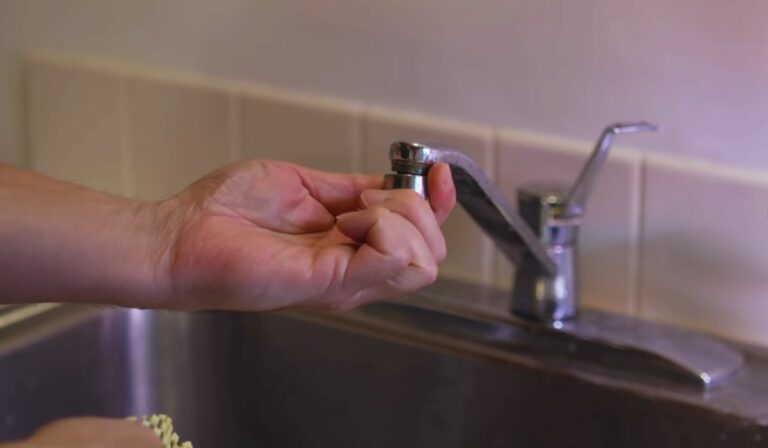How to Fix Basin Stopper
To fix your basin stopper, first identify if it’s stuck, leaking, or draining slowly. You’ll need basic tools like screwdrivers and pliers. Carefully remove the stopper by loosening the pivot rod under the sink. Clean out debris, hair, or buildup, check for worn seals or broken parts, then reassemble it securely. Test the movement and water flow to ensure it works smoothly. If you want to restore your stopper’s function fully, there are simple steps you can follow next.
Identifying Common Basin Stopper Problems
Before you can fix your basin stopper, you need to identify the problem causing it to malfunction. Often, the stopper won’t hold water because it’s misaligned or the seal is worn out.
If water drains slowly, hair or debris might be clogging the drain or the stopper itself.
Sometimes, the stopper won’t move smoothly, which usually means the linkage connecting the stopper to the lever is loose or broken.
Another common issue is buildup from soap or minerals, making the stopper sticky or stuck.
By spotting these signs early, you can pinpoint whether the problem lies with the stopper mechanism, the linkage, or blockages.
Once you know the cause, you’ll be ready to tackle the repair confidently and efficiently.
Tools and Materials Needed for Repair
To fix your basin stopper effectively, you’ll need the right tools and materials on hand. Gather a flathead screwdriver and a Phillips screwdriver to handle different screws. A pair of pliers will help you grip and twist components firmly. You’ll also want an adjustable wrench for loosening nuts. Keep a cloth or rag nearby to wipe away grime or water.
For replacement parts, get a new stopper or washers that match your basin model. Some lubricating grease can make reassembly smoother, and plumber’s tape might be necessary to ensure watertight seals. Having a small container to hold screws and parts prevents losing them during repair.
With these essential tools and materials ready, you’ll be set to tackle most basin stopper issues efficiently and confidently.
Removing the Basin Stopper
Although it may seem tricky at first, removing the basin stopper is straightforward once you know where to look. Start by plugging the drain with a rag or your finger to prevent small parts from falling down.
Next, lift the stopper and locate the pivot rod beneath the sink—it’s connected to the drain pipe via a nut. Use a wrench or pliers to loosen this nut carefully. Once loosened, pull the pivot rod out; this will free the stopper inside the drain.
You can then lift the stopper straight out from the basin. If your stopper is a lift-and-turn type, simply unscrew it by turning counterclockwise.
Remember to keep all parts together for easy reassembly later.
Cleaning and Inspecting the Stopper Mechanism
Once you’ve removed the basin stopper, take a close look at the mechanism for any buildup or damage. Check for hair, soap scum, or mineral deposits that could be clogging the moving parts.
Use a small brush or an old toothbrush to scrub away grime, especially around hinges and springs.
If you spot rust or corrosion, gently sand it off with fine-grit sandpaper.
Inspect the rubber seals or gaskets for cracks or wear, as these can cause leaks or poor sealing.
Make sure the stopper moves smoothly without sticking.
If any part looks broken or excessively worn, you might need to replace it.
Cleaning and inspecting thoroughly ensures the stopper works properly and prevents future problems before putting it back.
Reassembling and Testing the Basin Stopper
After thoroughly cleaning and inspecting the stopper mechanism, you’re ready to reassemble it carefully. Begin by aligning the stopper with the pivot rod and insert it into the drain hole.
Secure the pivot rod back into its original position, ensuring the retaining clip snaps in place. Tighten any screws or nuts you loosened, but don’t overtighten to avoid damage.
Once assembled, test the stopper by moving the lever or knob to see if it rises and falls smoothly. Run water to check if the basin holds water without leaking.
If it doesn’t seal properly, adjust the pivot rod or reposition the stopper until it creates a tight seal. Repeat testing until the stopper operates flawlessly and the basin drains correctly.
Frequently Asked Questions
How Often Should I Replace My Basin Stopper?
You should replace your basin stopper every 2-3 years or sooner if it’s leaking, sticking, or not sealing properly. Regular maintenance helps, but once it shows signs of wear, it’s time for a new one.
Can I Fix a Basin Stopper Without Removing It?
You can sometimes fix a basin stopper without removing it by cleaning debris or adjusting the linkage underneath. However, for deeper issues like replacing parts, you’ll likely need to remove the stopper to properly fix it.
What Causes a Basin Stopper to Leak Water?
Your basin stopper leaks because its seal is worn or damaged, debris is stuck, or the linkage is misaligned. Check for cracks, clean the stopper, and adjust the mechanism to stop water from leaking through.
Are Basin Stoppers Universal or Do They Vary by Sink Model?
Basin stoppers aren’t universal; they vary by sink model and drain size. You’ll need to check your sink’s specifications or measure the drain to ensure you get a stopper that fits and functions properly.
Can a Faulty Basin Stopper Affect Water Pressure?
No, a faulty basin stopper won’t affect your water pressure. It only controls water flow in the basin drain, not the water supply. If pressure’s low, you should check your pipes or faucet instead.
Conclusion
Now that you’ve identified the problem, gathered your tools, and cleaned the stopper mechanism, reassemble everything carefully. Test the basin stopper to make sure it opens and closes smoothly without leaks. If it’s still not working right, double-check your steps or consider replacing worn parts. With a little patience and these simple fixes, you’ll have your basin stopper functioning perfectly again in no time. You’ve got this!

